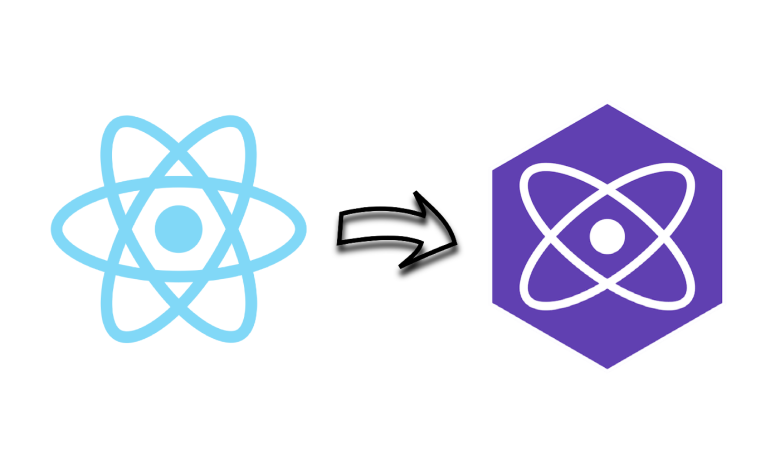Difference Between Preact vs. React: Quick Comparison

React is a popular framework in the web and mobile app development field. It has many features to build high-performing web and mobile applications. As per the Statista report 2021, most businesses hire react native app developers for developing applications for web and mobile platforms.
But wait. There is another platform similar to React. It is known as a lightweight alternative to React for creating web apps. Many developers consider Preact has similar development features to React.
But there are some differences between these two technologies. If you are going to use React and Preact in your project, you should understand what are the key differences between React and Preact.
And here in this blog, I have given a quick comparison to let you understand the difference between Preact and React. This blog will help you make a well-informed decision for your web and mobile app development project.
What is Preact?
Preact is a lightweight JavaScript library. It has the same API and ECMA script support that React has. The best advantage of using Precat is it performs fast and executes the virtual DOM, similar to other JavaScript frameworks. Therefore, Preact is among the top choices of JS libraries in the developer community.
Advantages of Preact
Preact is basically a JavaSCript library. It claims to be the fastest alternative to React. It takes a 3kb size only and offers the same API functionality. You can use this library to create mid-size web and mobile applications. The best part of Preact is that because it is lightweight so it is highly useful in progressive web app development.
- Capability to integrate
- Use of popular React API
- Dedicated CLI
- Run in the browser
Disadvantages of Preact
Preact is designed as an alternative to React. Hence, its most features are the replicas of React. Preact serves the same purpose but with low storage space. It is mainly used as an alternative to React.
- No synthetic event handling
- Use of additional library
- Similar features of React
What is React?
React is a JavaScript library for developing UIs for applications. It is a declarative, efficient, and dynamic JS library. React native development company uses this tool to compose complex UIs from various components. The key point to note here is that React is a library, not a framework. It is used for making user interfaces. React is maintained by Meta (formerly known as Facebook).
Advantages of React
React is mainly used for developing complex and highly scalable web and mobile applications. Therefore, companies hire react native app developers for building complex-level UI for mobile applications. It has robust server-side rendering as compared to other JS frameworks in mobile app development. You can use it to create complex architecture in mobile apps.
- Easy development of flexible web and mobile apps
- Enhanced performance
- Reusable components
- Unidriectaionla data flow
- Easy to learn
- Separate tools for efficient debugging
Disadvantages of React
React is a view-centric library. It requires manual efforts to detect technical aspects like data handling, routing, state management. For creating some specific features, it relies on third-party modules and libraries.
- JSX syntax
- High development pace
- Poor documentation
- Unopinionated Framework
So what is the Difference between Preact and React?
The primary factor that differentiates Preact from React is it doesn’t execute a synthetic event system. Preact utilizes the browser’s standard to register the event handlers. While they both serve the same purpose, there are some subtle differences between Preact and React in terms of the following aspects.
Debugging Messages
Preact enables developers to easily debug with helpful warning and error messages. These debugging messages help developers to take immediate action while coding. They can make necessary changes instantly. It is different from React that needs a bundler to strip out the debugging messages during the development.
Hooks
Hooks are placed separately in Preact. Moreover, it requires to be imported in a different manner, not as same as React.
Rendering:
React native app development generally takes much time in loading. As a result, it makes the rending process slow and complicated. Whereas, Preact offers the rapid rending process.
API
Preact offers only ES6 class-based component definitions and stateless functional components.
Application Size
Preact development takes low in size as compared to React Native app development. As per Github, the Preact 7.2.0 is just 3kb whereas React 16.2.0 is 31.8K in size.
Event handling
Preact doesn’t utilize synthetic events. However, React has its own synthetic event system for event handling.
JSX and HTML
Unlike React, Preact allows developers to implement the old HTML attributes. It doesn’t force JSX for client-side templating.
These are the key differences. Take a look at the below comparison table to understand the difference between Preact and React in terms of various factors.
| Features | Preact | React |
| Hooks | Separated | Not separated |
| App Size | Small | High |
| Event Handling | Own synthetic event system | Uses browser’s addEventListener |
| JSX and HTML | Allows old HTML attributes | Requires JSX implementation |
| Rendering | Fast | Slow |
| Support Complex solution | No | Yes |
| Advanced tools | No | Yes |
Time for Final Decision
Preact and react both are JS libraries. They are used by developers and react native development services in web and mobile solutions. React is best when it comes to building complex-level web and mobile applications.
While Preact is used as an alternative to React for making simple size apps. You can use both Javascript libraries. Or switch among these depending on your application development requirements. So when it comes to determining which is the better JS library between Ptecat and react, the simple answer is what is your goal?
If you want to build a lightweight web application or PWA, Preact is a good option for this case. Or if you want to develop a mobile app that requires advanced features and UI architecture, React would be the better option for this.
So the whole point is not to choose the better one but to intelligently use both libraries according to your project requirements. Therefore, you should take assistance from a professional react native app development company. Make sure the company you choose holds great hands-on experience using Preact and React.
About the Author
Peter Handscomb is a React Native Developer at MobileCoderz-a leading React Native App Development Company that provides modern react native development services. He works with software engineers and mobile app developers to build applications. Besides his core profession, he travels to adventurous spots and reads fiction novels.




